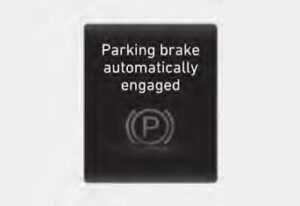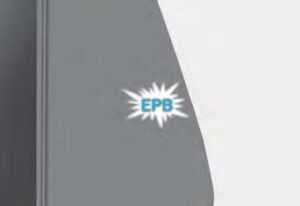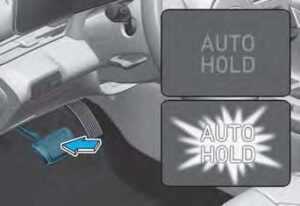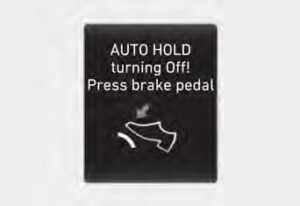Hyundai Elantra Hybrid 2023 Coasting and Brake
The 2023 Hyundai Elantra Hybrid Coasting and Brake System Guidelines introduce two integral aspects of the vehicle’s eco-friendly and efficient driving experience. Coasting, enabled by regenerative braking, allows the vehicle to glide smoothly without throttle input, harnessing kinetic energy to recharge the hybrid battery and enhance fuel efficiency. The guidelines delve into the seamless integration of coasting, highlighting its benefits in reducing fuel consumption and brake wear. Additionally, they provide insights into the operation of the brake system, covering both standard and regenerative braking techniques, ensuring a comprehensive understanding of how to maximize energy conservation and driving efficiency. By combining these features, Hyundai continues to prioritize sustainable and efficient driving, promoting an eco-conscious and user-centric approach in the 2023 Elantra Hybrid.
2023 Hyundai Elantra Specs, Price, Features, Milage (Brochure)
Coasting Guide
The coasting guide function informs the driver when to take the foot off the accelerator by anticipating a decelerating event* based on the analysis of driving routes and road conditions of the navigation. It encourages the driver to remove the foot from the pedal and allow coasting down the road with an EV motor only. This helps prevent unnecessary fuel consumption and increases fuel efficiency.
Information
Example of a deceleration event is making a right/left turn, driving through a rotary, entering or exiting a highway (freeway), etc.
Setting Coasting Guide function
Coasting Guide can be selected from the User Settings mode in the cluster LCD display by following the procedure below.
- Set the ignition switch in the ON position.
- SLECT display.
Operation conditions
After selecting the function from the User Settings mode, the system enters the ready status by following the procedure below.
- Enter your destination information in the navigation system and select the driving route.
- Check that the vehicle is in ECO mode by driving the vehicle in
- (Drive). Drive the vehicle between 25 mph (40 km/h) ~ 100 mph (160 km/h).
Information
The operating speed may vary due to the difference between the instrument cluster and navigation affected by tire inflation level. The coasting guide is only a supplemental function to assist with fuel-efficient driving. Thus, the operating conditions may be different in accordance with traffic/road conditions (i.e. driving in a traffic jam, driving on a slope, driving on a curve). Take the actual driving conditions into consideration, such as distances from the vehicles ahead/behind, while referring to the coasting guide function as guidance.
BRAKE SYSTEM
Power Brakes
Your vehicle has power-assisted brakes that adjust automatically through normal usage. In the event of a vehicle power failure, the power assist for the brakes will not work. You can still stop your vehicle, but it will require greater force and increased pedal travel than normal. The stopping distance, however, will be longer than with power brakes.
Information
When the brake pedal is depressed under certain driving conditions or weather conditions, you may temporarily hear a noise. This is normal and does not indicate a problem with your brakes. While driving on a road with deicing chemicals, brake noise or abnormal tire wear may occur due to deicing chemicals. In safe traffic conditions, apply the brakes to remove deicing chemicals on the brake discs and pads.
WARNING
Take the following precautions:
- Do not drive with your foot resting on the brake pedal. This will create abnormally high brake temperatures, excessive brake lining and pad wear, and increased stopping distances.
- When descending down a long or steep hill, move the gear shift lever to Manual Shift Mode and manually downshift to a lower gear in order to control your speed without using the brake pedal excessively. Applying the brakes continuously will cause the brakes to overheat and could result in a temporary loss of braking performance.
- Wet brakes may impair the vehicle’s ability to safely slow down; the vehicle may also pull to one side when the brakes are applied. Applying the brakes lightly will indicate whether they have been affected in this way. Always test your brakes in this fashion after driving through deep water. To dry the brakes, lightly tap the brake pedal to heat up the brakes while maintaining a safe forward speed until brake performance returns to normal. Avoid driving at high speeds until the brakes function correctly.
Disc Brakes Wear Indicator
When your brake pads are worn and new pads are required, you will hear a high-pitched warning sound from your front or rear brakes. You may hear this sound come and go or it may occur whenever you depress the brake pedal.
NOTICE
To avoid costly brake repairs, do not continue to drive with worn brake pads.
Information
Always replace brake pads as complete front or rear axle sets.
Electronic Parking Brake (EPB)
Applying the parking brake
To apply the EPB (Electronic Parking Brake):
- Depress the brake pedal.
- Pull up the EPB switch.
Make sure the parking brake warning light ( ) comes on. With the Auto Hold feature enabled, the EPB is automatically applied when the vehicle is shut off. However, if Auto Hold is OFF when the vehicle is turned off, the EPB will not be applied.
WARNING
To reduce the risk of SERIOUS INJURY or DEATH, do not operate the EPB while the vehicle is moving except in an emergency situation. It could damage the brake system and lead to an accident. Releasing the parking brake
To release the EPB (Electronic Parking Brake):
- Place the POWER button in the ON position.
- Depress the brake pedal.
- Press the EPB switch.
- Make sure the Parking Brake Warning Light goes off.
To release EPB (Electronic Parking Brake) automatically:
Shift lever in P(Park) With the vehicle in the ready ( ) mode, depress the brake pedal and shift out of P (Park) to R (Reverse) or D (Drive). Shift lever in N (Neutral) With the vehicle in the ready ) mode, depress the brake pedal and shift out of N (Neutral) to R (Reverse) or D (Drive).
- Satisfy the following conditions
- Ensure seat belts are fastened and the doors, hood, and tailgate are closed.
- With the vehicle in the ready ( ) mode, depress the brake pedal and shift out of P (Park) to R (Reverse), D (Drive) or Manual shift mode.
- Depress the accelerator pedal.
- Make sure the Parking Brake Warning Light goes off.
Information
- For your safety, you can engage the EPB even though the ignition switch is in the OFF position, but you cannot release it.
- For your safety, depress the brake pedal and release the parking brake manually with the EPB switch when you drive downhill or when backing up the vehicle.
NOTICE
- If the parking brake warning light is still on even though the EPB has been released, we recommend that the system be checked by an authorized HYUNDAI dealer.
- Do not drive your vehicle with the EPB applied. It may cause excessive brake pad and brake rotor wear.
EPB (Electronic Parking Brake) may be automatically applied when:
- Requested by other systems
- The driver turns the engine off while Auto Hold is operating.
Warning messages release EPB, fasten the seatbelt, close the door, hood, and trunk
A warning will sound and a message will appear in the following conditions.
- If you try to drive with EPB applied.
- If the driver’s seat belt is not fastened and you try to release EPB.
- If the driver’s door is opened, and you try to release EPB.
- If the hood is opened with the gear in D(Drive) and you try to release EPB.
- If the trunk is opened with the gear in R(Reverse) and you try to release EPB.
- If there is a problem with the vehicle.
WARNING
To prevent unintentional movement when stopped and leaving the vehicle, do not use the P(Park) position in place of the parking brake. Set the parking brake and make sure the vehicle is securely positioned in P(Park). Never allow anyone who is unfamiliar with the vehicle to touch the parking brake. If the parking brake is released unintentionally, serious injury may occur. All vehicles should always have the parking brake fully engaged when parking to avoid inadvertent movement of the car which can injure occupants or pedestrians.
NOTICE
A click sound may be heard while operating or releasing the EPB, but these conditions are normal and indicate that the EPB is functioning properly. When leaving your keys with a parking lot attendant or valet, make sure to inform him/her how to operate the EPB. The EPB may malfunction if you drive with the EPB applied. When you automatically release EPB by depressing the accelerator pedal, depress it slowly.

AUTO HOLD turning Off!
Press the brake pedal When the conversion from Auto Hold to EPB is not working properly a warning will sound and a message will appear.
The parking brake automatically engaged
If the EPB is applied while Auto Hold is activated, a warning will sound and a message will appear.
EPB malfunction indicator
This warning light illuminates if the ignition switch is set to the ON position and goes off in approximately 3 seconds if the system is operating normally.
If the EPB malfunction indicator remains on, comes on while driving, or does not come on when the ignition switch is changed to the ON position, this indicates that the EPB may have malfunctioned.
If this occurs, have the system checked by an authorized HYUNDAI dealer.
The EPB malfunction indicator may illuminate when the ESC indicator comes on to indicate that the ESC is not working properly, but it does not indicate a malfunction of the EPB.
NOTICE
If the EPB warning light is still on, have the system checked by an authorized HYUNDAI dealer. If the parking brake warning light does not illuminate or blinks even though the EPB switch was pulled up, the EPB may not be applied. If the parking brake warning light blinks when the EPB warning light is on, press the switch, and then pull it up. Repeat this one more time. If the EPB warning does not go off, have the system checked by an authorized HYUNDAI dealer.
Parking brake warning light
Check the parking brake warning light by placing the ignition switch to the ON position (do not start the engine).
This light will be illuminated when the parking brake is applied with the ignition switch in the START or ON position.
If the parking brake warning light remains on after the parking brake is released while the engine is running, there may be a malfunction in the brake system. Immediate attention is necessary.
If at all possible, cease driving the vehicle immediately. If that is not possible, use extreme caution while operating the vehicle and only continue to drive the vehicle until you can reach a safe location.
Emergency braking
If there is a problem with the brake pedal while driving, emergency braking is possible by pulling up and holding the EPB switch. Braking is possible only while you are holding the EPB switch. However, the braking distance will be longer than normal.
WARNING
Do not operate the parking brake while the vehicle is moving except in an emergency situation. It could damage the brake system and lead to a severe accident.
Information
During emergency braking, the parking brake warning light will illuminate to indicate that the system is operating.
NOTICE
If you continuously notice a noise or burning smell when the EPB is used for emergency braking, have the system checked by an authorized HYUNDAI dealer. When the EPB (Electronic Parking Brake) does not release If the EPB does not release normally, contact an authorized HYUNDAI dealer by loading the vehicle on a flatbed tow truck and have the system checked.
Auto Hold
The Auto Hold maintains the vehicle in a standstill even though the brake pedal is not depressed after the driver brings the vehicle to a complete stop by depressing the brake pedal.
To apply :

- With the driver’s door and engine hood closed, depress the brake pedal and then press the [AUTO HOLD] switch. The white AUTO HOLD indicator will come on and the system will be in the standby position.
- When you stop the vehicle completely by depressing the brake pedal, the Auto Hold maintains the brake pressure to hold the vehicle stationary. The indicator changes from white to green.
- The vehicle will remain stationary even if you release the brake pedal.
- If EPB is applied, Auto Hold will be released.
To release :
- If you press the accelerator pedal with the gear in D (Drive), R (Reverse), or Manual shift mode, the Auto Hold will be released automatically and the vehicle will start to move. The AUTO HOLD indicator changes from green to white.
- If the vehicle is restarted using the cruise control toggle switch (RES+ or SET-) while Auto Hold and cruise control are operating, the Auto Hold will be released regardless of accelerator pedal operation. The AUTO HOLD indicator changes from green to white.
WARNING
When the AUTO HOLD is automatically released by depressing the accelerator pedal, always take a look around your vehicle. Slowly depress the accelerator pedal for a smooth start.
To cancel :
- Depress the brake pedal.
- Press the [AUTO HOLD] switch.
- The AUTO HOLD indicator will turn off.
WARNING
To prevent, unexpected and sudden vehicle movement, ALWAYS press your foot on the brake pedal to cancel the Auto Hold before you:
- Drive downhill.
- Drive the vehicle in R (Reverse).
- Park the vehicle.
Information
- The Auto Hold does not operate when:
- The driver’s door is opened
- The engine hood is opened in D (Driving) or N (Neutral)
- The shift lever is in P (Park)
- The trunk is opened in R (Reverse)
- The EPB is applied
- The vehicle stop more than 30 minutes.
- For your safety, the Auto Hold automatically switches to EPB when:
- The driver’s door is opened in D (Driving) or N(Neutral).
- The engine hood is opened.
- The trunk is opened in R (Reverse).
- The vehicle stops for more than 10 minutes
- The vehicle stands on a steep slope
- The vehicle moves several times
- The vehicle stops for more than 30 minutes accumulatively.
In these cases, the parking brake warning light comes on, the AUTO HOLD indicator changes from green to white, and a warning sound and a message will appear to inform you that EPB has been automatically engaged. Before driving off again, press the foot brake pedal, check the surrounding area near your vehicle, and release the parking brake manually with the EPB switch. While operating Auto Hold, you may hear mechanical noise. However, it is normal operating noise.
NOTICE
If the AUTO HOLD indicator changes to yellow, the Auto Hold is not working properly. Contact an authorized HYUNDAI dealer.
WARNING
Depress the accelerator pedal slowly when you start the vehicle. For your safety, cancel the Auto Hold when you drive downhill, back up the vehicle or park the vehicle.
NOTICE
If there is a malfunction with the driver’s door or engine hood open detection system, the Auto Hold may not work properly. Contact an authorized HYUNDAI dealer.
Warning messages
The parking brake automatically engaged
When the EPB is applied from Auto Hold, a warning will sound and a message will appear.
AUTO HOLD turning Off
Press brake pedal
When the conversion from Auto Hold to EPB is not working properly a warning will sound and a message will appear. When this message is displayed, the Auto Hold and EPB may not operate. For your safety, depress the brake pedal.
AUTO HOLD conditions not met. Close door, hood, and trunk When you press the [AUTO HOLD] switch, if the driver’s door and engine hood are not closed, a warning will sound and a message will appear on the cluster LCD display. Press the [AUTO HOLD] switch after closing the driver’s door and hood.
FAQ
Coasting refers to the process of the vehicle gliding without applying throttle input. In the Elantra Hybrid, it’s often facilitated by the hybrid system’s regenerative braking.
Regenerative braking captures kinetic energy during braking and converts it into electrical energy to recharge the hybrid battery, improving energy efficiency.
Some vehicles allow you to initiate coasting by releasing the accelerator pedal; guidelines may provide specific instructions.
The guidelines may specify conditions, such as steep hills or heavy traffic, where coasting may not be ideal.
Coasting can improve fuel efficiency by reducing the need for frequent braking and reducing wear on the brake system.
The guidelines may cover braking techniques for hybrid vehicles, as well as information on using the brake pedal.
Some vehicles offer regenerative braking settings that allow you to adjust the intensity; check the guidelines for details.
The guidelines may include maintenance recommendations for the brake system to ensure optimal performance.
The guidelines may provide tips and recommendations for driving efficiently with these features.
If you experience issues, consult the guidelines for troubleshooting tips or seek professional assistance.
Some vehicles offer different driving modes that affect brake response; guidelines may cover these modes.
The vehicle’s warranty may cover certain components related to the brake system and regenerative braking; consult the warranty documentation for details.
Regenerative braking can reduce wear on traditional brakes, potentially extending their lifespan.
You can typically find the complete guidelines in the owner’s manual provided with the vehicle or consult your Hyundai dealership for a copy or further assistance.
The guidelines may offer tips for adapting braking techniques to various driving conditions.
Useful Link
View Full User Guide: Hyundai Elantra Hybrid 2023 User Guide
Download Manuals: https://owners.hyundaiusa.com/us/en/resources/manuals-warranties.html
2023 Hyundai Elantra Specs, Price, Features, Milage (Brochure)


